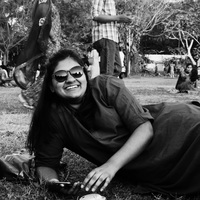Srishti Raj
Tata Institute of Social Sciences, School of Media and Cultural Studies, Graduate Student
- University of Mumbai, English Literature, Undergraduateadd
In their paper titled "The Political Economy of International Communications: Foundations for the Emerging Global Debate about Media Ownership and Regulation" (2003), media scholars Robert W. McChesney and Dan Schiller talk about the myth... more
In their paper titled "The Political Economy of International Communications: Foundations for the Emerging Global Debate about Media Ownership and Regulation" (2003), media scholars Robert W. McChesney and Dan Schiller talk about the myth of the "free press". They believe that this myth "fogs" the actual relations of power that exist between the state and the media. Ben Bagdikian, in his book The Media Monopoly (2000), talks about the relationship between capitalist corporations and the media, referring specifically to the "doctrine of objectivity" that was introduced in the coverage of news.
In this paper, I apply these two ideas to see how this seemingly 'objective' method of news coverage actually transmits hegemonic ideology that upholds and propagates the status quo, since media is a heavily influenced by both the state and private corporations. The methodology includes analysing the content of newspaper reports on the Dalit protests in Mumbai that took place in 2016.
In this paper, I apply these two ideas to see how this seemingly 'objective' method of news coverage actually transmits hegemonic ideology that upholds and propagates the status quo, since media is a heavily influenced by both the state and private corporations. The methodology includes analysing the content of newspaper reports on the Dalit protests in Mumbai that took place in 2016.
Research Interests:
Shopping malls have become a ubiquitous marker of urban living, becoming centres of human activity. While they are called "shopping" malls, they serve many more functions than just the purchase of goods. Malls are increasingly becoming... more
Shopping malls have become a ubiquitous marker of urban living, becoming centres of human activity. While they are called "shopping" malls, they serve many more functions than just the purchase of goods. Malls are increasingly becoming centres where not only can an individual make several kinds of purchases at once, but also watch films, eat food, socialise, or just "hang out". They are a sort of microcosm of urban life, where all that makes the urban modern and unique are present. Also, these spaces are strategically located and designed in order to attract consumers. Their popularity and success in the urban landscape make them rich fields for analysis.
